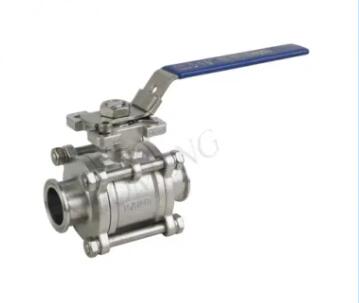Turning the Flow: Exploring the Operation of Manual Ball Valves and Handle Varieties
2024-02-22
Ball valves are essential components in a wide range of industries, offering reliable control over fluid flow in pipelines and systems. Among the various types of ball valves, manual ball valves stand out for their simplicity, durability, and ease of operation. In this blog post, we'll delve into how manual ball valves operate, their key components, and the types of handles commonly used for controlling flow.
1. Operation of Manual Ball Valves:
Manual ball valves consist of a spherical ball with a bore (hole) through its center, which rotates within a housing or body to control the flow of fluid. When the valve is in the open position, the bore aligns with the pipeline, allowing fluid to pass through. Conversely, when the valve is closed, the bore is perpendicular to the pipeline, blocking the flow of fluid. This simple yet effective design provides reliable on/off control with minimal friction and pressure drop.
2. Key Components:
The main components of a manual ball valve include:
- Body: The outer casing that houses the ball and seals, typically made of metal or thermoplastic materials.
- Ball: The spherical component with a through-hole that regulates flow.
- Stem: The shaft connected to the ball that rotates to open or close the valve.
- Seats: Sealing surfaces located at the ends of the bore, ensuring tight shut-off when the valve is closed.
- Seals: O-ring or packing materials that provide a leak-tight seal between the ball and the body.
3. Types of Handles:
Manual ball valves feature various types of handles for actuation, each offering distinct advantages in terms of ergonomics, ease of use, and suitability for different applications. Some common handle types include:
- Lever Handles: Lever handles are one of the most widely used types of handles for manual ball valves. They feature a lever or arm that rotates to open or close the valve, providing quick and effortless operation. Lever handles are available in different lengths and configurations, including tee, wing, and butterfly handles, offering flexibility in installation and use.
- T-Handles: T-handles consist of a handle shaped like the letter "T," which rotates to control the valve. T-handles provide a comfortable grip and are often used in applications where space is limited or where manual operation is infrequent.
- Gear Handles: Gear handles utilize a gear mechanism to transmit torque from the operator to the valve stem, allowing for precise control and adjustment of flow. Gear handles are commonly used in applications requiring fine-tuning or high torque requirements, such as industrial processes or large-diameter pipelines.
- Knob Handles: Knob handles feature a circular or spherical knob that rotates to operate the valve. Knob handles offer a compact design and are well-suited for applications where space is limited or where fine adjustments are necessary.
Conclusion: The Handle to Control Flow
In conclusion, manual ball valves offer reliable control over fluid flow, with a simple yet effective design that makes them indispensable in numerous industries. Understanding how manual ball valves operate and the types of handles available for actuation is essential for selecting the right valve for a given application. Whether it's a lever, T-handle, gear handle, or knob handle, the choice of handle can significantly impact the ease of operation, efficiency, and performance of a manual ball valve. By choosing the appropriate handle and understanding its operation, engineers and operators can ensure smooth and reliable flow control in their systems and processes.



